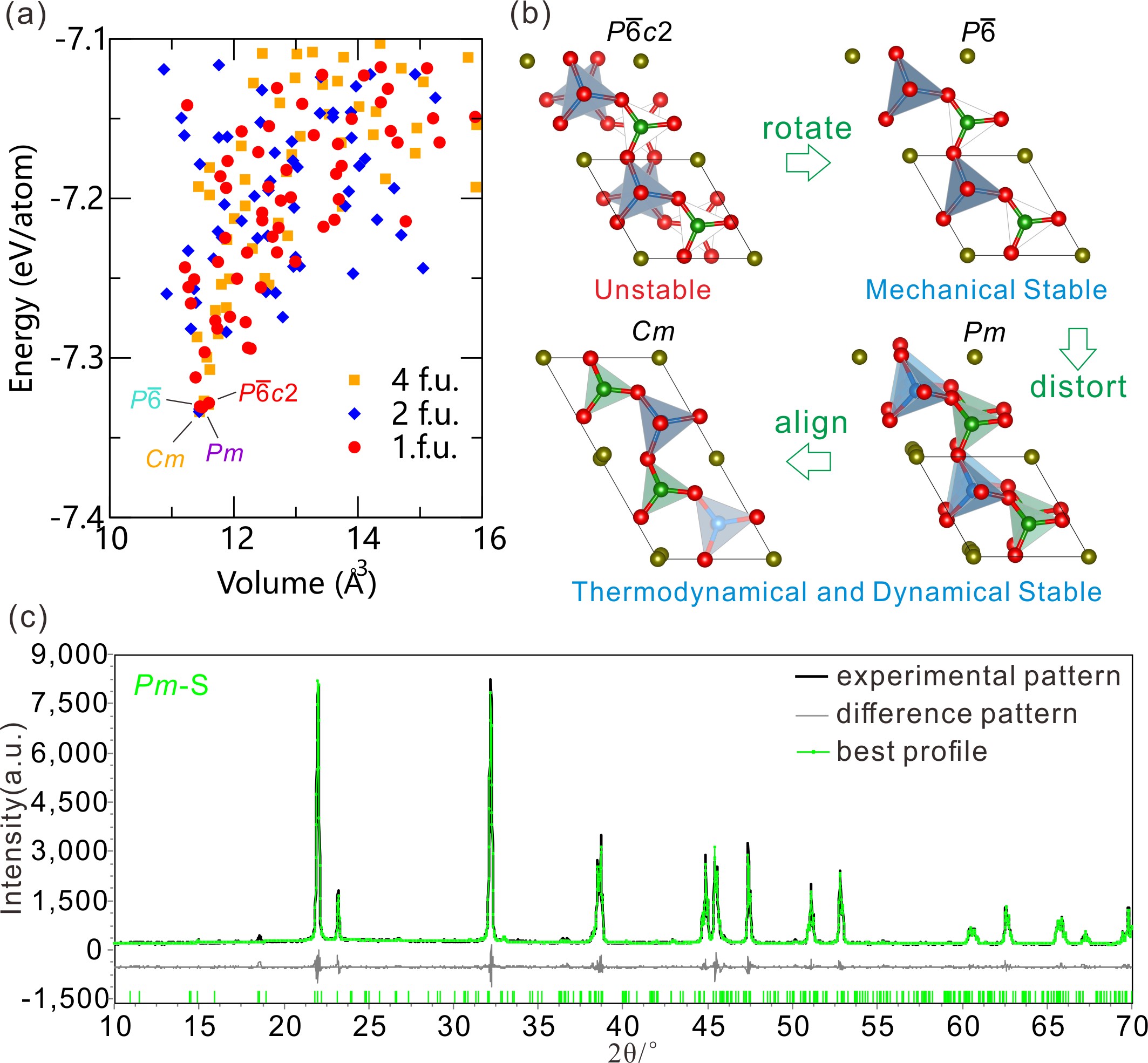Nonlinear optical (NLO) crystals are the key materials for laser science and technology because they can expand the frequency range of common laser sources through the Second Harmonic Generation (SHG) process.
Borate NLO materials have attracted much attention because they have wide transmission ranges and large laser damage thresholds. Sr2Be2B2O7 (SBBO) has long been considered one of the most promising deep-UV NLO materials. It was reported that SBBO overcomes the strong layering disadvantage of KBe2BO3F2 (KBBF) and exhibits the largest SHG response among all reported borates with [A(BO3)] ∞(A = Be, Al) layers. However, the experimental structure of SBBO with the space group of P c2 remained a puzzle for a long time because the reported structure was determined based on limited diffraction data and is not able to explain the observed SHG response.
c2 remained a puzzle for a long time because the reported structure was determined based on limited diffraction data and is not able to explain the observed SHG response.
In a recent study published in J. Phys. Chem. Lett., the research group led by Prof. DENG Shuiquan from Fujian Institute of Research on the Structure of Matter(FJIRSM) of the Chinese Academy of Sciences unveiled the structure and origin of SHG response of nonlinear optical material Sr2Be2B2O7.
Using high-throughput method, the researchers screened three candidate structural models, i.e., the Cm, Pm and P , which show consistent SHG responses with experimental works while the P
, which show consistent SHG responses with experimental works while the P c2 structure is not appropriate for SBBO in terms of both structural stability and SHG response.
c2 structure is not appropriate for SBBO in terms of both structural stability and SHG response.
Based on the powder X-ray diffraction(XRD) data provided by Prof. WANG Xiaoyang from Technical Institute of Physics and Chemistry of CAS, they refined these structure models plus a superstructure of space group Pm-S derived from the most stable Cm structure.
By using the Rietveld methods, the researchers found that the Pm-S structure model is the best for describing the structure of the SBBO, and the P  and P
and P c2 structure models should be dropped. The Cm structure, the parent of Pm-S structure, is good enough for many actual purposes.
c2 structure models should be dropped. The Cm structure, the parent of Pm-S structure, is good enough for many actual purposes.
Through the atom response theory analysis, they resolved the cause for the SHG of SBBO at the atomic and orbital level, and revealed that the local inversion symmetry is important in understanding the SHG responses of NLO materials in general.
This study solves the long-term puzzling structural problem of SBBO and opens a way for dealing with the challenge of growing large crystals.

High-throughput crystal-structure prediction of SBBO and Rietveld refinement results for the Pm-S model. (Image by Prof. DENG’s group)
Contact:
Prof. DENG Shuiquan
Fujian Institute of Research on the Structure of Matter
Chinese Academy of Sciences
Email: sdeng@fjirsm.ac.cn